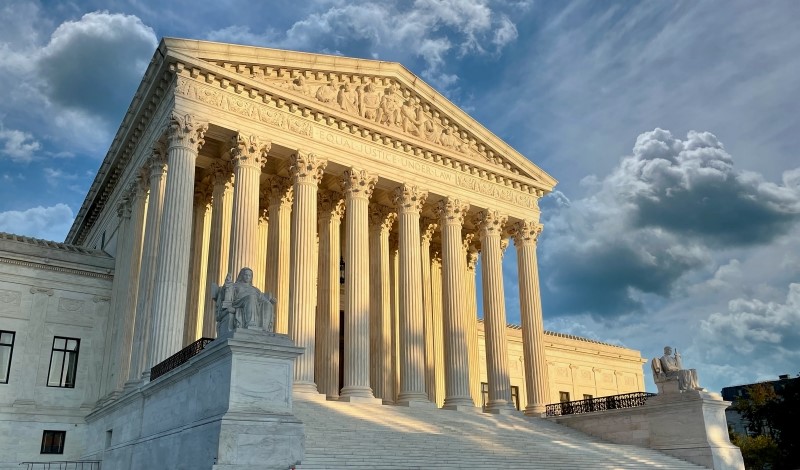
The Supreme Court’s decision to overturn Chevron may have two salutary effects on administrative law.
In its decision last Friday in Loper Bright Enterprises v. Raimondo, the Supreme Court overruled Chevron v. NRDC, the 1984 opinion in which the Court instructed judges to uphold any reasonable interpretation of an ambiguous agency-administered statute.
Other legal scholars have already noted that the Court’s opinion leaves agencies with significant roles in the process of statutory interpretation and policy-making in two ways. The Loper Bright Court repeatedly refers to the standard of review announced in its 1944 decision in Skidmore v. Swift & Co., and it interprets Skidmore today to impose a duty on a reviewing court to give “respectful consideration” to agency interpretations of the statutes that they administer. The Loper Bright majority also includes a long paragraph in its opinion which recognizes that Congress can delegate policy making power to agencies by using broad language in statutes that authorize agencies to act.
The Loper Bright opinion has two other important effects that have not yet received the attention that they deserve. First, it reduces the problems created by the massive increase in flip-flopping that our extremely polarized political environment has produced. Second, it eliminates any justification for continued application of the powerful new version of the major questions doctrine that the Court created in 2021 and has now applied in four cases.
Massive flip-flops in statutory interpretation have caused severe adverse effects. These flip-flops have been created by extreme political polarity and enabled by Chevron deference. To address these flip-flops, I have previously urged the Court to replace the Chevron standard of review with the Skidmore standard of review. The Skidmore standard of review values consistency in agencies’ interpretations of statutes and imposes a duty on every agency to explain itself in detail whenever it makes a change in its interpretation of a statute. Under Skidmore, the “weight” to be given to the agency’s interpretation “depends upon the thoroughness evident in its consideration, the validity of its reasoning, its consistency with earlier and later pronouncements, and all those factors which give it power to persuade, if lacking power to control.”
Two scholars recently completed a study of flip-flopping that documents the magnitude of the phenomenon. The incidence of government flip flopping—taking inconsistent positions before courts with respect to the meaning of a statute—has “increased dramatically” in recent years. During the period between 1941 and 1980, the government flip flopped in an average of less than one case every two years. During the period between 2017 and 2023, the government flip-flopped in an average of about five cases each year.
During the oral argument in Loper Bright, the Justices referred repeatedly to the problem of flip-flopping. The opinion responds to the problem in two ways. First, it repeatedly refers to the duty of a court to apply the Skidmore standard that emphasizes the importance of consistency and requires an agency to justify in detail any change in its statutory interpretations. Second, the opinion makes it clear that the over 18,000 precedents that have been created by court opinions that apply Chevron as the basis for upholding or rejecting an agency’s interpretation of a statute remain in effect and qualify as stare decisis. The message is clear—an agency cannot change its interpretation of a statute without providing a thorough and detailed explanation for the change.
The second neglected effect of Loper Bright is to eliminate any plausible justification for the Court to continue to apply the powerful new version of the “major questions” doctrine that it announced in its 2021 opinion in Alabama Association of Realtors v. DHHS and subsequently applied in 2022 in three other cases.
The Court has struggled to justify this radical new doctrine and has done a poor job of explaining it. The dangers created by the major questions doctrine become obvious when you look at the way that lower courts have applied it. A 2023 study found that many courts interpret the doctrine to require them to hold invalid any agency action that has a significant economic or political effect and that is based on an agency’s interpretation and application of a broadly worded statute. Widespread application of that interpretation of the doctrine would emasculate agencies.
In Ohio v. EPA, an opinion issued the day before the Court issued its opinion in Loper Bright, the Court applied a strong version of the arbitrary and capricious test as the basis for an injunction that prohibits an agency from implementing a rule because the agency did not discuss adequately comments that criticized the proposed rule. Taken together, those two opinions—Ohio v. EPA and Loper Bright—eliminate any plausible basis for the major questions doctrine. With courts now instructed to apply all the tools of statutory construction, along with the demanding Skidmore standard and a demanding version of the arbitrary and capricious standard, there is no place for the major questions doctrine. Moreover, the Loper Bright opinion directly undermines the major questions doctrine by recognizing the legitimacy of statutes that use broad language to confer policy making power on agencies.
Going forward, as lawyers, regulatory officials, and scholars assess the impact of Loper Bright, they would do well to keep in mind these two important effects of the Court’s decision to overturn Chevron. It promises to dampen some of the worst tendencies toward policy flip-flopping caused by political polarization, and it obliterates any need for the problematic major questions doctrine.
This essay is part of a series, titled The Supreme Court’s 2023-2024 Regulatory Term.




